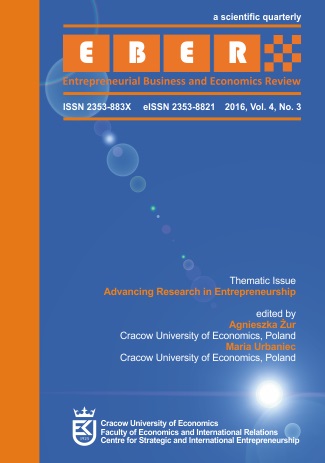Entrepreneurship and Economic Freedom: Do Objective and Subjective Data Reflect the Same Tendencies?
Entrepreneurship and Economic Freedom: Do Objective and Subjective Data Reflect the Same Tendencies?
Author(s): Burak ErkutSubject(s): Economy, Business Economy / Management
Published by: Uniwersytet Ekonomiczny w Krakowie
Keywords: entrepreneurship; economic freedom; innovation
Summary/Abstract: Objective: The research question is whether the same tendencies on entrepreneurship, innovation and economic freedom can be captured by subjective (Global Entrepreneurship Monitor) and objective (Index of Economic Freedom) data – and to which extent one can classify countries by different data sources in a theoretical framework based on the national competitiveness of each country. Research Design & Methods: Main method used is the direct discriminant analysis. Since this approach has shortcomings, selected variables from an exhaustive CHAID analysis were used to predict the degree of economic freedom of the country based on the answers of experts. Findings: To determine the degree of economic freedom in a country, the effective enforcement of intellectual property rights legislation and quick access to utilities are the two variables with the most informational content. 86,8% of the original grouped cases was classified correctly – this is above the widely accepted threshold of 75%. Implications & Recommendations: A new trend in entrepreneurial research is to build compound indices based on different data sources. It is important to understand whether parts of a compound index reflect the same tendencies. This paper gives formal empirical evidence supporting this hypothesis. Contribution & Value Added: Coduras and Autio (2013) define a research program on Global Entrepreneurship Monitor, where they suggest that GEM shall be tested against objective data sources such as Index of Economic Freedom. This was the main aim of the analysis, which closes a research gap defined in this research program.
Journal: Entrepreneurial Business and Economics Review
- Issue Year: 4/2016
- Issue No: 3
- Page Range: 11-26
- Page Count: 16
- Language: English

